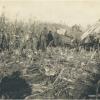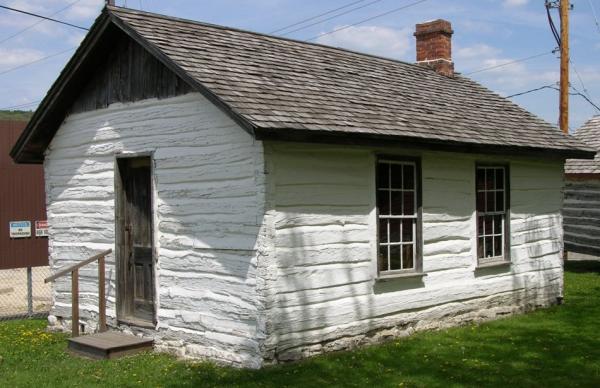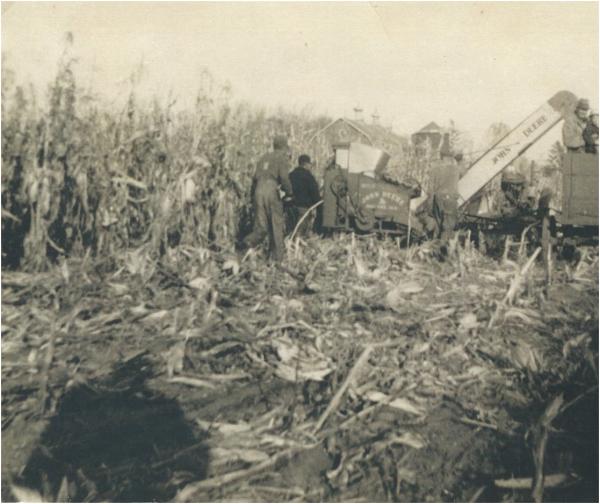Importance of citizens working in their communities
| Grade | 1st Grade | Class | Social Studies | Length of Lesson | 40-45 Minutes |
| Lesson Title | Importance of citizens working in their communities |
| Unit Title | Global Citizenship |
| Unit Compelling Question | Why should I be a global citizen? |
| Historical Context: To become a citizen in the United States a person must go through the process called naturalization. This process requires individuals be at least 18 years old. They must have lived in their current state for at least three months. They must have a good moral character, and pass a two-part naturalization test. Citizens are asked to swear to defend the United States Constitution. ~ Allyson Simpson, Simpson College 2018.008.005 In the 1860s, a handful of Norwegian immigrants to Iowa who were followers of the State Church in Norway, or the Norwegian Synod, tried to develop a system of parochial schools where they could teach all of the subjects, including religion and the Norwegian language, as a way of maintaining Norwegian identity. The idea, however, was not popular with the people in the Norwegian Synod's church congregations because they preferred to send their children to the "common schools" or public schools to learn English and American ways. This school building, the Rovang School, was one of three Norwegian parochial schools built to provide part-time religious education in the Norwegian language. The school was built in 1880 and served as a parochial school in rural Decorah for about four decades. The Rovang School was used primarily for religious education and students spent two week sessions in the schoolhouse, taking time off from public school during that period. The content was taught in Norwegian and included devotions, history of Lutherans, history of the Bible and hymns. Johan Hagen was the teacher and taught from 1888-1918. The creation of the Norwegian schools caused controversy among the church and among the public schools intially. In the mid to late 1800s. a high increase of immigrants was seen entering the United States from various countries. As they struggled to settle down in the country and find work, they were generally not accepted or welcomed by Americans. A term called cultural assimilation began in schools where immigrant students were taught "American" customs and to leave behind their country's traditions and way of doing things. This included what they ate, wore, how they spoke and what they learned. The method was used in hopes of assimilating immigrants into American culture. When news of creating a separate Norwegian school broke, many were worried that the school would separate them again and resort them back to the "immigrant outcast", making it hard to find work and survive in American society. The public school and the church came to a compromise that students would only attend the religious school part-time to ensure that they would not miss out on learning English and American customs. 2018.017.012 This photograph shows a farmer in Fredericksburg Township, Chickasaw County, using a John Deere #10 corn picker. This machine was pulled by a tractor and could harvest one row of corn at a time. The machine would separate the ears of corn from the cornstalks as it cut them, and then dump the ears into a separate wagon which typically followed alongside the machine. |
|
| Lesson Supporting Question | |
| Lesson Overview | Students will be recalling what we’ve already learned in the previous lesson about a citizen and using that information to help them figure out why it is important that people in their community work. Then, students will explore different job sites and think of occupations that relate to the job sites. |
| Primary Sources Used |
|
| Resources Needed | |
| Standard | |
| Lesson Target | Students will demonstrate why it is important that citizens in communities work by completing an exit slip that explains 3 reasons. |
| Lesson Themes | |
|
| Formative Assessment (How will you use the formative assessments to monitor and inform instruction?) |
I will use an exit slip to determine whether the students can explain why it is important that a citizen works in their community. |
| Summative Assessment (How does the lesson connect to planned summative assessment(s)?) |
Students will be taking a summative assessment after the next lesson. |
| Author | Kaci Johnson | Created | Last Edited | ||||
| Reviewer: Dr. Chad Timm, Simpson College | |||||||
| Lesson Plan Development Notes: Social Studies Methods, Simpson College, Spring 2019 | |||||||




